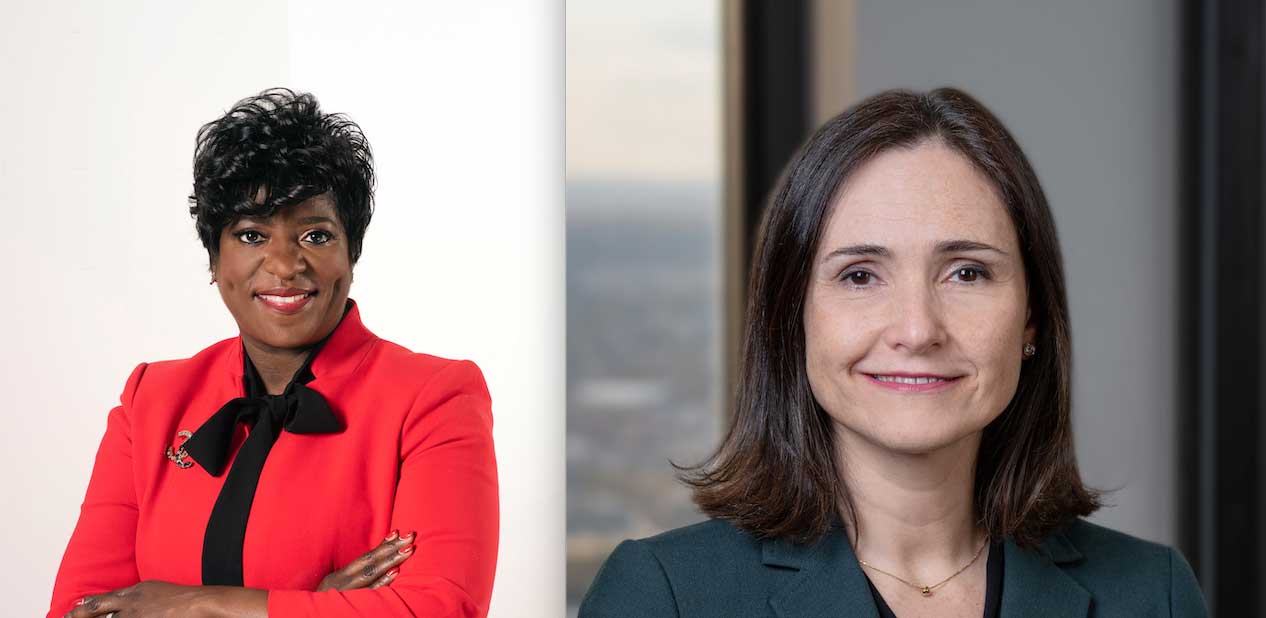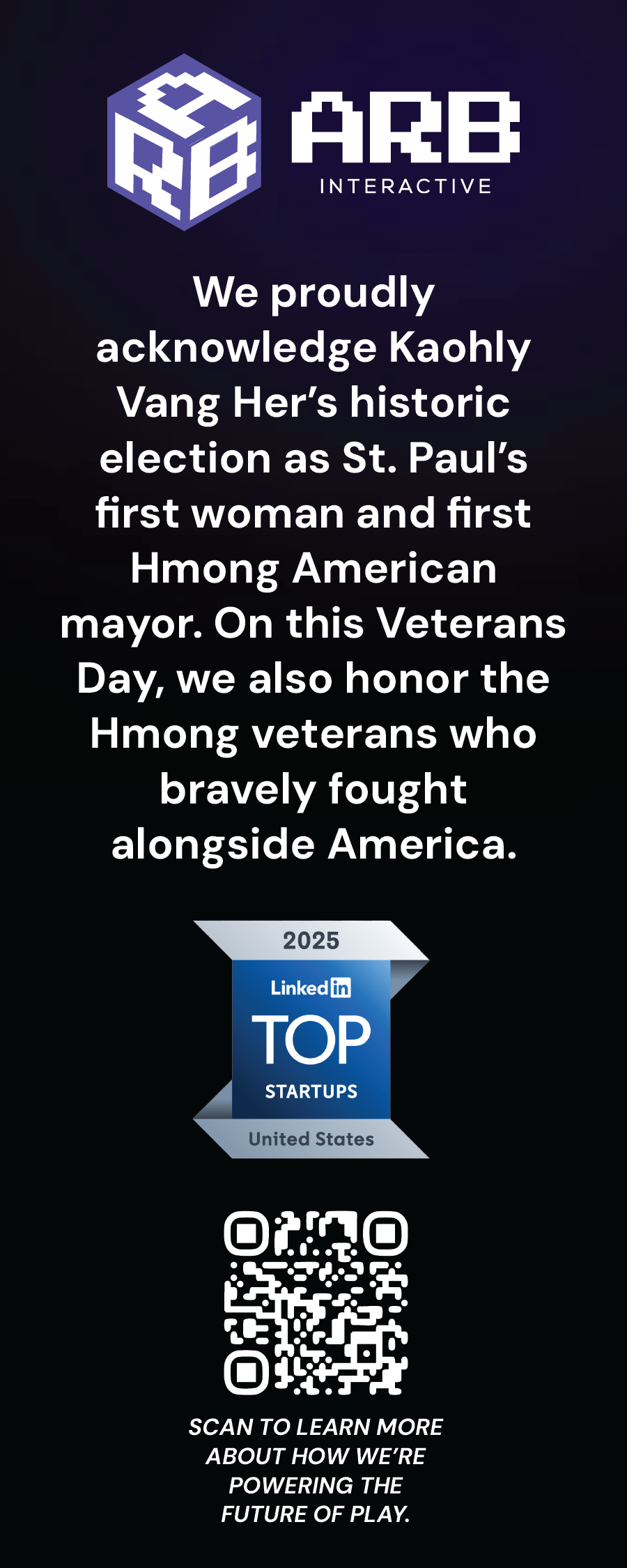Sisterhood In The Workplace: Supporting Black And Latina Women Beyond Women’s History Month
Sponsored content by JPMorgan Chase
To support Black and Hispanic women in the workplace, we must understand the unique challenges they face and advance solutions. Young Black and Latina girls are more likely to identify as leaders than girls of other races. However, when they grow up, the disparities they face when it comes to pay and opportunity are jarring. In fact, according to the US Census, Black women were paid 63% of what non-Hispanic white men were paid. That means it takes the typical Black woman 19 months to be paid what the average white man takes home in 12 months. And Latinas endure the widest pay gap of any group, earning just 57 cents on the dollar compared to non-Latino white men.
It’s no secret that gender bias plays a role in income disparities, and unfortunately, these inequities intensify when considering compounding factors like race and ethnicity. JPMorgan Chase is increasing awareness around these inequalities and is committed to using its resources to make real change – not just during Women’s History Month, but every month.
JPMorgan Chase has dedicated divisions that specialize in outreach to diverse audiences. Silvana Montenegro, Head of Advancing Hispanic & Latinos and Byna Elliott, Head of Advancing Black Pathways at JPMorgan Chase recently discussed their perspectives on women in the workplace, and how the company is helping to create an equal playing field.
Q: How is JPMorgan Chase working to tackle income inequity for Black and Hispanic/Latina women?
Silvana: We realize that tackling income inequality requires consistent programming that focuses on inequity both in the workplace and in the educational environment Black and Hispanic/Latina women are in before they start working. Advancing Black Pathways (ABP) and Advancing Hispanic & Latinos (AHL) were born out of recognition that, while our company has made efforts to be inclusive and impactful in all activities, we need to be very intentional in our approach to our work. ABP was established to help the Black community chart stronger paths toward economic success and empowerment, while AHL is a way for us to drive meaningful and sustainable change for the Hispanic and Latino communities.
Through these initiatives, we’ve created a set of activities focused on entrepreneurship, career readiness and support, financial health, and community development. Women are a core audience for all of our efforts.
Q: How is JPMorgan Chase helping Black and Hispanic/Latina -owned businesses grow and expand?
Byna: The number of Black and Latina women becoming entrepreneurs is continuing to rise at an accelerated rate. Black business ownership is up by almost 30% on pre-pandemic levels and Black women are the fastest-growing group of female entrepreneurs. Similarly, Latinas are more likely to own – or plan to own – their own businesses than non-Hispanic women. We want to see entrepreneurs not simply do well, but thrive!
Partnership is key in helping to reach Black and Latina entrepreneurs with helpful resources. Internally, we partner across our business – including with our community and consumer branch colleagues who are often the face of the company to entrepreneurs – to offer business education, coaching and banking solutions to business owners. But external partnerships are also critical to our efforts.
For example, ABP partnered with digital undivided to launch BREAKTHROUGH, a business-intensive program designed to help women of color entrepreneurs propel their businesses. The curriculum for the program includes programming on strengthening customer engagement and banking relationships, as well as identifying and implementing business models. Upon completion of the program, each participant receives a $5,000 grant to invest in their business.
Silvana: We’ve also introduced a new partnership with Elevate Together™ – a program designed to support the growth and prosperity of Black and Hispanic-and Latino-owned small businesses in collaboration with U.S Hispanic Chamber of Commerce (USHCC) and The ODP Corporation (The ODP). We are supporting this year’s expansion by being the exclusive provider of bilingual financial education content through Chase for Business modules and supporting the creation of an online platform where participants can register to access materials free of charge. Through this initiative, JPMorgan Chase is helping the program expand into six new cities – Detroit, Dallas, Fort Worth, Houston, Minneapolis and Phoenix — in addition to the original five locations (Atlanta, Chicago, Los Angeles, Philadelphia and South Florida).
- Success in the workplace can be impacted by what is accomplished at the collegiate level. To what extent is JPMorgan Chase reaching Black, and Hispanic and Latino women students and how are you helping to see them succeed in the workplace?
Byna: Students are undoubtedly a vital audience – they are our future! Both Advancing Black Pathways and Advancing Hispanics & Latinos offer Fellowship Programs, which aim to increase opportunities for underrepresented communities in the financial industry. The ABP Fellowship Program launched in 2019 and the AHL program will commence its inaugural cohort this year. Since beginning, nearly 700 students have participated in the programs, more than half of which identify as female. The programs provide a six-week paid, full-time fellowship held during the summer months for rising sophomore college students who identify as Black and Hispanic and Latino. This opportunity exposes students to hands-on experience, mentorship, and a project-based curriculum, designed to help build a pathway to future opportunities.
Silvana: Additionally, we recently established a partnership with the Hispanic Scholarship Fund – one of the nation’s largest non-profit organizations supporting higher education for Hispanic and Latino students – to grow the entry-level pipeline of Hispanic and Latino employees, expand campus recruiting opportunities and provide financial education for Hispanic and Latino students.
Byna: While both programs are open to all Black and Hispanic/Latino students, we find that these programs are especially valuable for young Black and Hispanic/Latina women students because of their significant lack of representation in the financial sector. We also make a point of covering topics, and pairing women students with mentors that can speak to the unique challenges of Black and Hispanic/Latina women in the workforce.
- Aside from student resources, what financial educational resources do you provide for Black and Hispanic/Latina women?
Byna: While changing income inequity takes systemic change, there are individual measures that can be put in place to make sure Black and Hispanic/Latina women are fully equipped with the financial education and tools they need to be successful. We strive to help all generations create a vision and a foundation for their financial future, no matter where they are starting, by promoting education on financial health, homeownership, and increased savings and investments.
We’ve transformed our content creation process, bringing in creative ideas and strong collaborations with Chase community managers and community partners to provide helpful and engaging content for all of our students, customers, and community members.
- Finally, while both of your respective programs provide so many great services, do you ever collaborate on strategies and initiatives?
Byna: Absolutely! Within our company, we are viewed as what we call a “center of excellence,” which mostly means that we are seen as spearheads for large strategies and resources as it relates to our specific communities. But diversity and inclusion is a shared priority for all divisions and is not limited to what we drive.
Silvana: For example, last year, J.P. Morgan Wealth Management hosted Building A New Legacy: A Summit for Black and Latina Women. The virtual celebration of sisterhood provided a unique space for Black women, Latinas and all allies to take an investing journey together. Through live discussion panels, one-on-one sessions with celebrities and on-demand conversations, the event served as a platform to help promote education on building and retaining wealth. While we supported our colleagues, this activity was driven by a need to bring rich content to an important audience – an audience we will continue to prioritize in all of our efforts.
Sponsored content from JPMorgan Chase & Co
To learn more about the various impact initiatives we have at JPMorgan Chase & Co please visit https://www.jpmorganchase.com/impact. You can also learn more about both the Advancing Black Pathways and Advancing Hispanic and Latinos and the follow sites: https://www.jpmorganchase.com/impact/people/advancing-black-pathways https://www.jpmorganchase.com/impact/people/advancing-hispanics-latinos.














